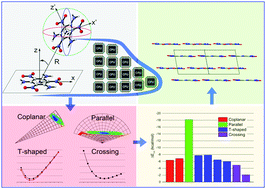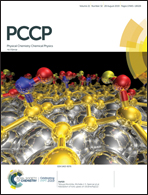High throughput scanning of dimer interactions to facilitate confirmation of the molecular stacking mode: a case of 1,3,5-trinitrobenzene and its amino-derivatives†
Abstract
Exactly predicting the packing structures of a given molecule is a crucial topic in crystal engineering, while it remains still challenging, as it requires huge calculations, largely above common computation cost and time limitations. However, current progress in high throughput calculations makes the fast screening of structures and properties feasible. In the present work, we exemplify this by considering a special case of ascertainment of the molecular stacking mode and shear properties of energetic materials. Four energetic π-bonded molecules, 1,3,5-trinitrobenzene, 2,4,6-trinitroaniline, 1,3-diamino-2,4,6-trinitrobenzene and 2,4,6-triamino-1,3,5-trinitrobenzene, with a different number of H atoms replaced by amino groups, are adopted as samples to scan the potential energy surfaces (PESs) of dimers through high throughput calculations. It is found that the parallel stacking mode is the most energetically favored, followed by the T-shaped, coplanar and crossing ones. Such an energetically favored stacking mode is observed in all related π-stacked crystal structures at ambient conditions or low temperatures. It shows that the stacking mode can be ascertained through the PES scanning of dimers, and thereby, the stacking structures and properties related to the stacking mode, like mechanical anisotropism, can be quickly screened by means of high throughput calculations.



 Please wait while we load your content...
Please wait while we load your content...